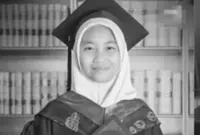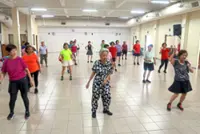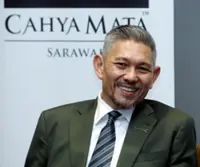Caregiving is typically associated with providing comprehensive physical and emotional support, often extending to performing daily tasks and ensuring parents’ comfort. Encouraging independence may be misinterpreted as neglect. — Pexels
Hoong sat on the edge of his bed, staring at the clock on the wall. It was almost noon – time for his father’s daily walk. But the thought of yet another argument made him pause.
He got up and walked into the living room, where his father sat in his favourite armchair, as he had every day for the past several months since his stroke.
“Pa, it’s time for your walk,” Hoong said, keeping his voice as gentle as possible. “Just for a few minutes, like the doctor said. It’ll help you stay strong.”
His father, Wong, barely glanced up from his newspaper. “I don’t want to go today. I’m tired,” he replied, resolute. He shifted in his chair and folded his arms, indicating that he didn’t want the conversation to go further.
“Pa, you need the exercise. If you don’t keep walking, your muscles will weaken, and it’ll be harder for you to move later,” Hoong persisted, walking over to him. “Come on, I will walk with you.”
Wong was adamant.
“You’re my son, Hoong, not my doctor. I don’t need to walk. You should be taking care of me, not making me do all these things. I’ve worked my whole life – now it’s your turn to take care of me properly.”
For Hoong, this was becoming a daily struggle. Ever since his father’s stroke, he had taken time off work to care for his parent, but their differing views on what caregiving meant were driving a wedge between them.
Hoong believed that helping his father maintain his independence – by encouraging him to walk, bathe himself, and stay active – was crucial for his recovery and dignity.
But Wong saw things differently. To him, caregiving meant that Hoong should take care of everything for him. It was his duty as a son. In his eyes, the young one’s role was to provide all-rounded care, just as he had cared for his child. He didn’t understand why Hoong was pushing him to do things for himself.A Cultural Divide
Wong’s expectations weren’t just personal; they were deeply rooted in the values of their Malaysian Chinese family. He had spent his life working hard to provide for his children, and now, in his old age, he expected to be cared for in return – completely, without question.
Being asked to walk or do things on his own made Wong feel like Hoong was shirking his duty, or suggesting that he was no longer deserving of the care he had “earned” through years of sacrifice.
Encouraging elderly individuals to stay active can often clash with traditional caregiving notions, leading to conflict.
While promoting independence is essential for maintaining physical and mental health, it may be perceived as neglect or a lack of care, particularly in cultures where caregiving equals respect and devotion to parents.
This tension reflects the broader challenge of balancing modern health perspectives with deeply rooted cultural expectations in elder care.
The interaction between Hoong and his father isn’t unique in Asian family settings, where caregiving for elderly parents is often deeply rooted in cultural and filial values.
Across many Asian cultures, there is a strong emphasis on the responsibility of children to care for their ageing parents as an expression of gratitude, respect, and devotion.
In such settings, caregiving is typically associated with providing comprehensive physical and emotional support, often extending to performing daily tasks and ensuring parents’ comfort.
Encouraging independence, even when well-intentioned, may be misinterpreted as neglect or a lack of commitment to these responsibilities.
It can create emotional tension, with elderly parents feeling abandoned or undervalued, and children feeling misunderstood or constrained by traditional expectations.
In Wong’s mind, for example, Hoong’s insistence that he continues walking and doing things for himself was a sign that he didn’t want to care for him “properly”.
It felt like a rejection of his needs and, worse, a failure to honour the cultural values that placed the care of elderly parents in the hands of their children.
Understanding caregiving
The emotional toll of differing perspectives can weigh heavily on both the caregiver and the older person in need of care. Neither could see that they were both acting out of love –just from different angles.
For Hoong and Wong, frustration and misunderstanding built a wall between them, leaving each man feeling isolated in his own struggle.
This conflict is a common one in Malaysian families, where caregiving is often shaped by expectations of filial piety and all-rounded care.
These traditional values can sometimes clash with modern caregiving practices, which emphasise maintaining the elderly’s independence for as long as possible.
Older generations, particularly in cultures with strong familial caregiving traditions, often equate care with direct involvement and unwavering attention. They may see their children’s care as a reflection of love, respect, and duty.
When children encourage independence – such as asking them to perform tasks on their own or to stay active – this can be misinterpreted as neglect or a reluctance to provide proper care.
These feelings can lead to hurt, rejection, and a sense of being undervalued or abandoned.
Modern perspectives on health and well-being emphasise the importance of independence for maintaining physical and mental health in aging parents.
Encouraging autonomy is seen as a way to empower elderly parents, not to shirk responsibility. However, when parents resist or misinterpret these efforts, children can feel unappreciated and overwhelmed, as though their best intentions are constantly met with criticism or rejection.
At the heart of the issue is a mismatch in understanding what care means. For parents, care may mean being “looked after,” while for children, it may mean “helping them help themselves.”
What Hoong and his father needed was communication – they also need proper caregiving education.
Education that would help his father understand that maintaining his independence didn’t mean he was
being abandoned or neglected, but that it was an important part of his recovery and quality of life. And training that would teach Hoong how to balance his father’s desire for care with his need for physical activity and rehabilitation.
A balancing act
Proper caregiving education can help bridge this gap. By learning how to balance independence with care, and how to communicate effectively about what’s best for the care recipient, families can provide the right kind of support without feeling like they are failing their loved ones.
Caregiving doesn’t have to be all or nothing – it can be a partnership, one that respects both cultural values and the dignity of the care receiver.
With the right education, families like Hoong’s can find common ground, ensuring that their elderly loved ones receive the care they need without losing their sense of control or respect.
This article was contributed by The Malaysian Association for Social Care Professionals and Homes (Masoc Care). For a more aligned and informed caregiving journey, go to masoc.care/kaigocaregivingcourses, or contact 011-3301 9681 / info@masoc.care





